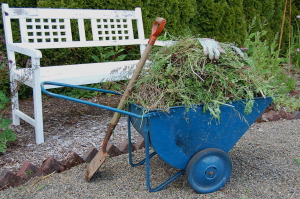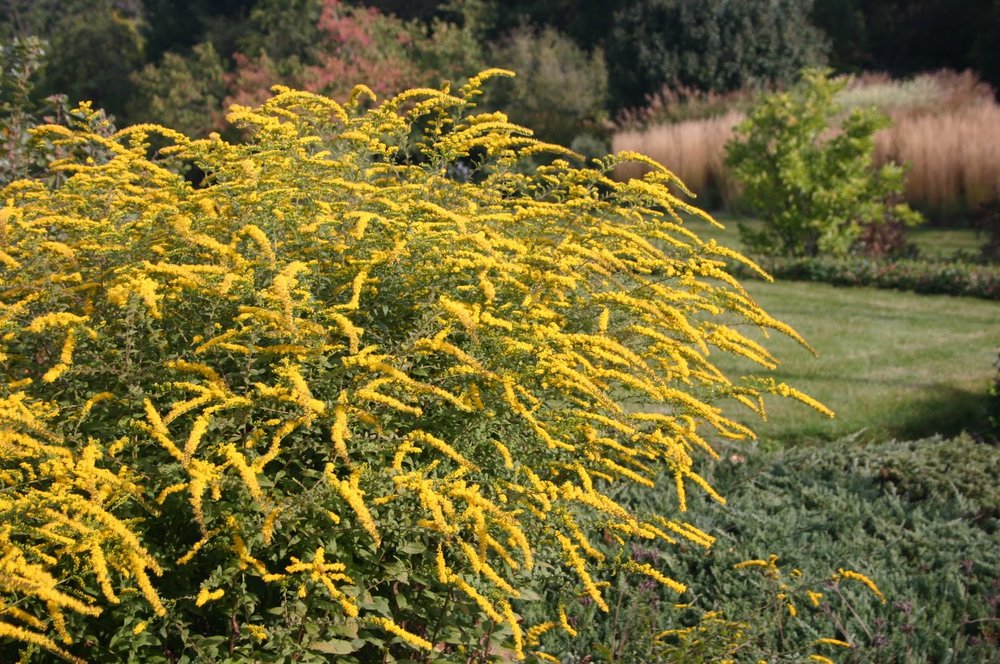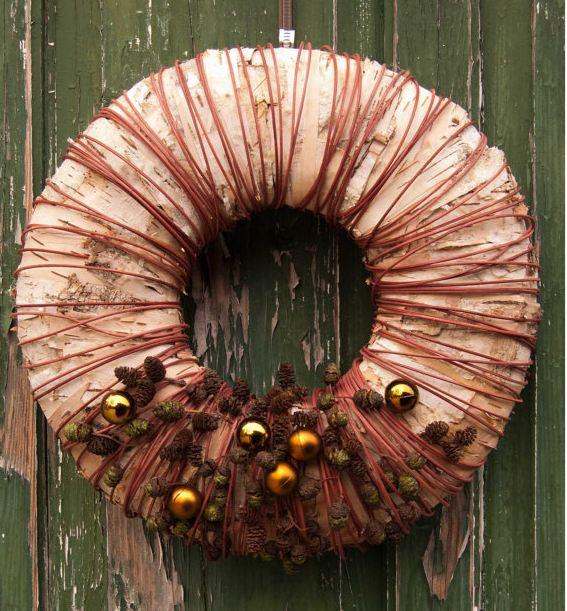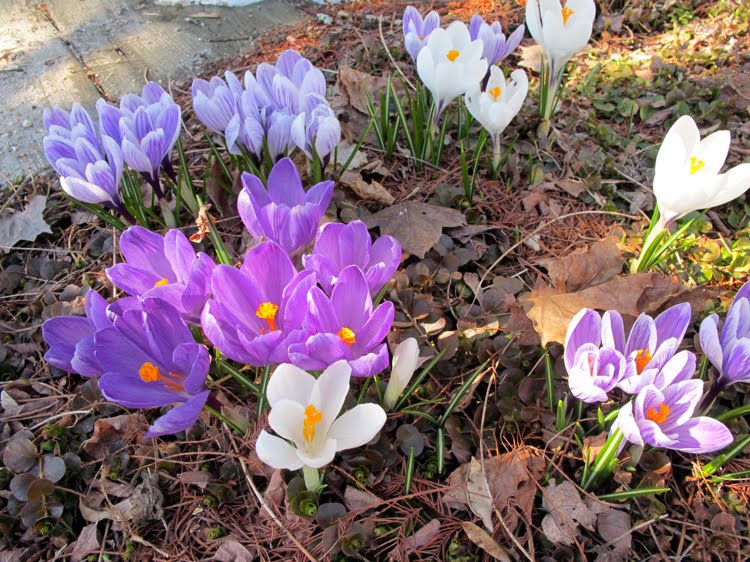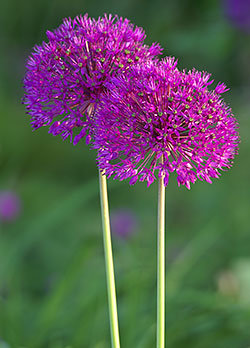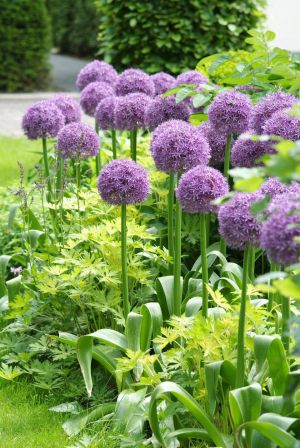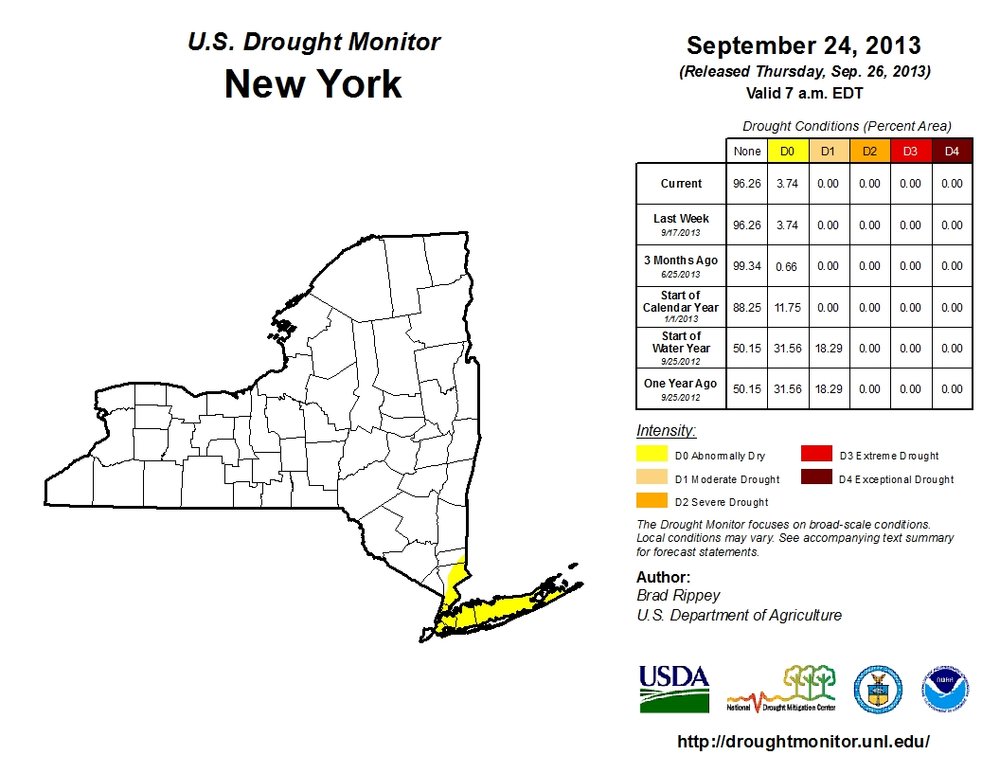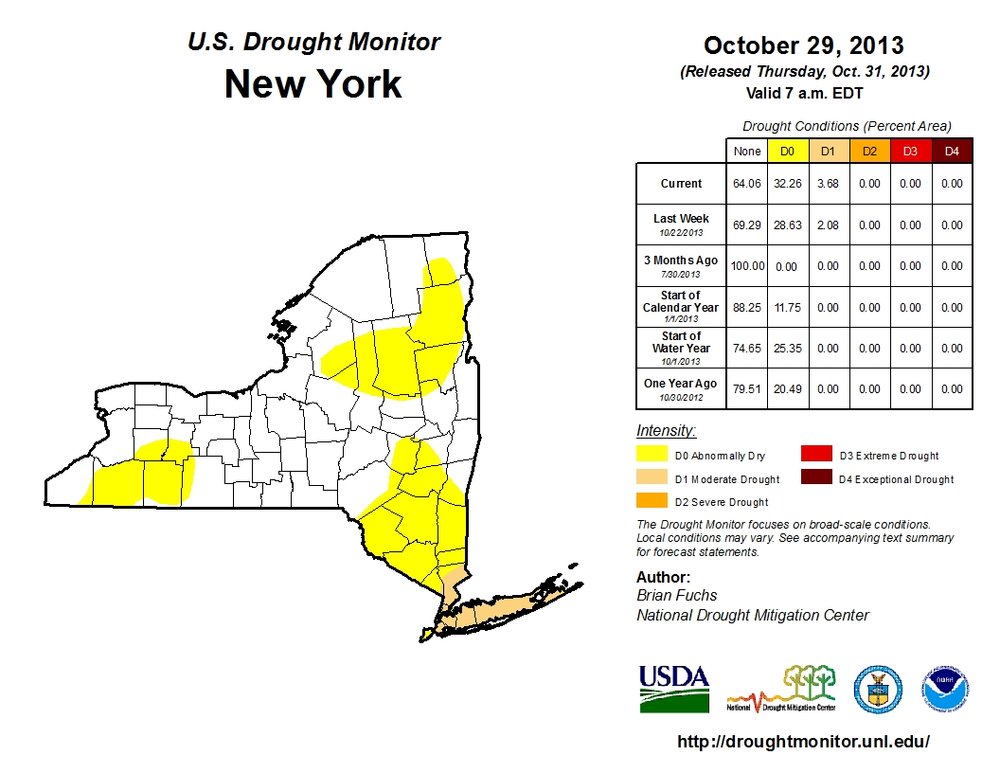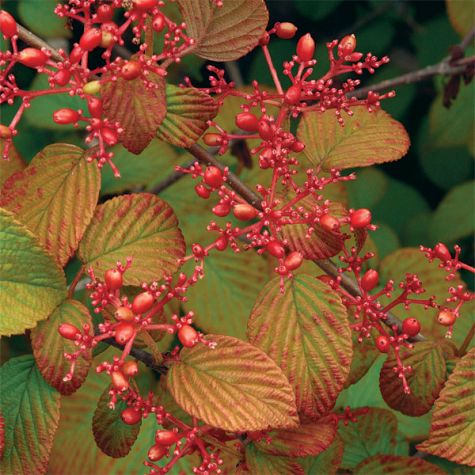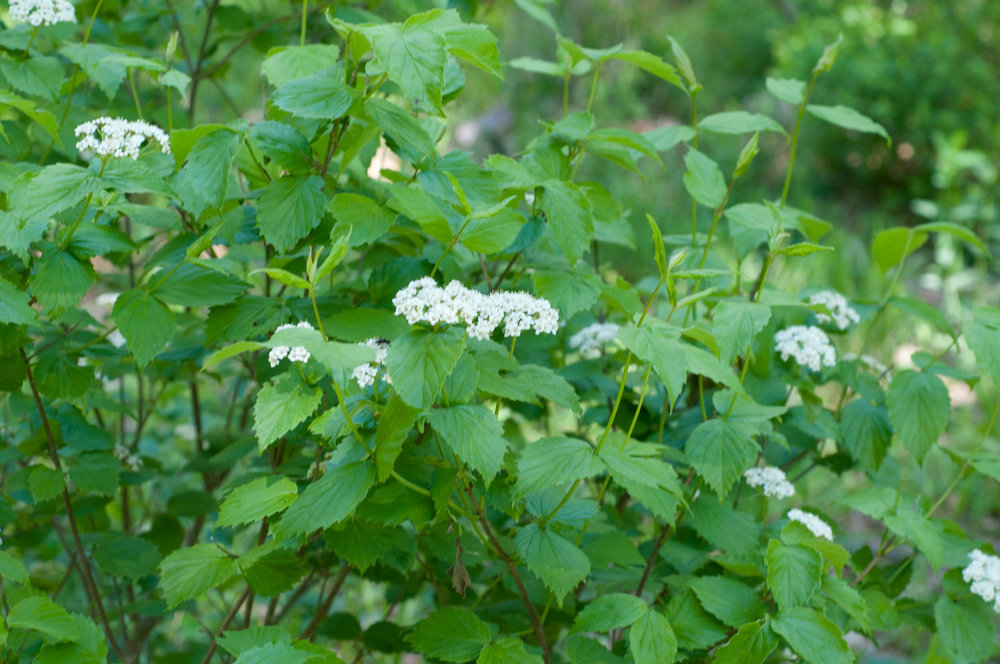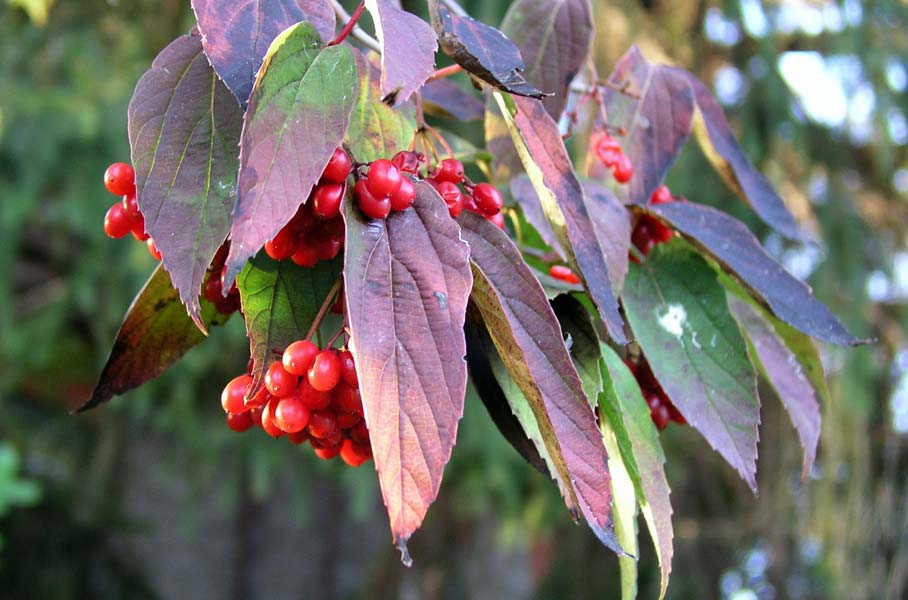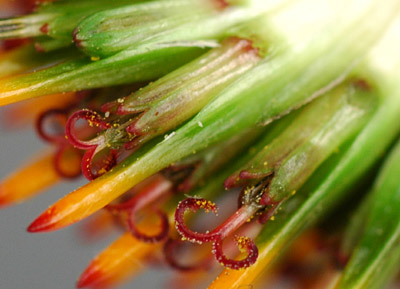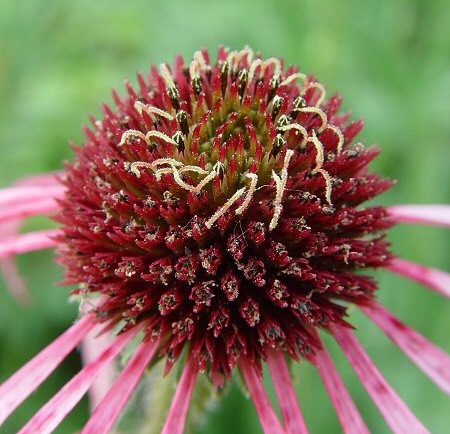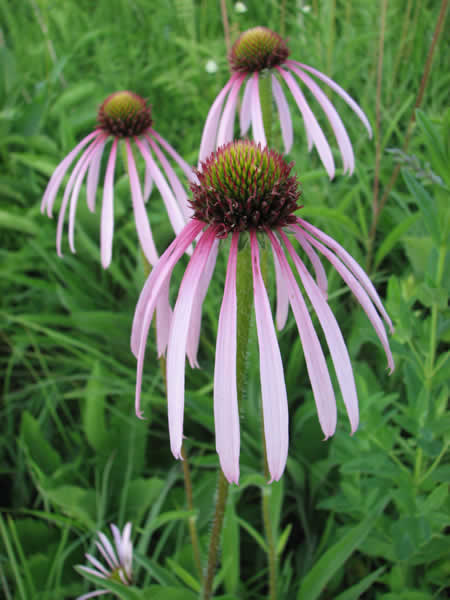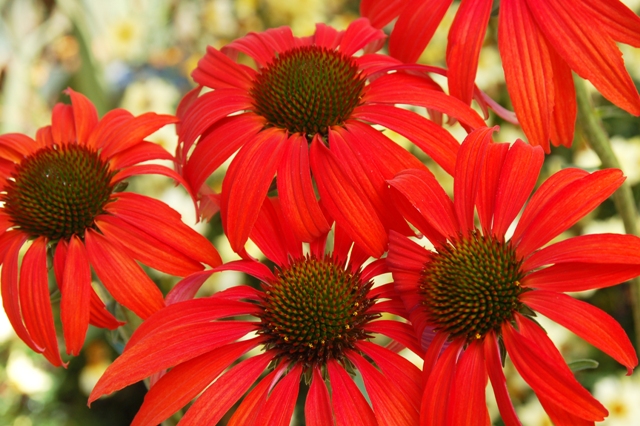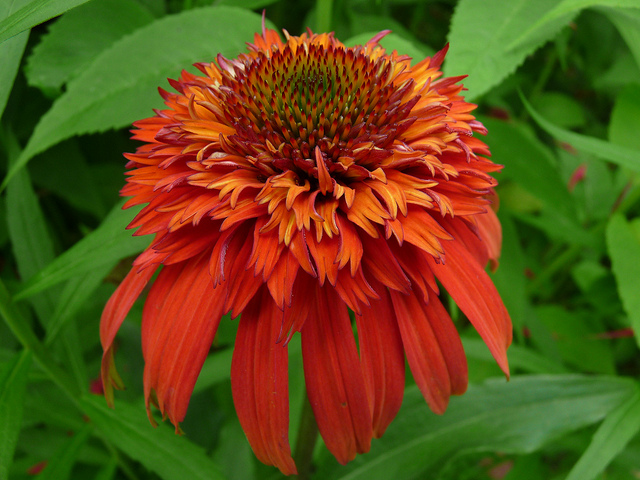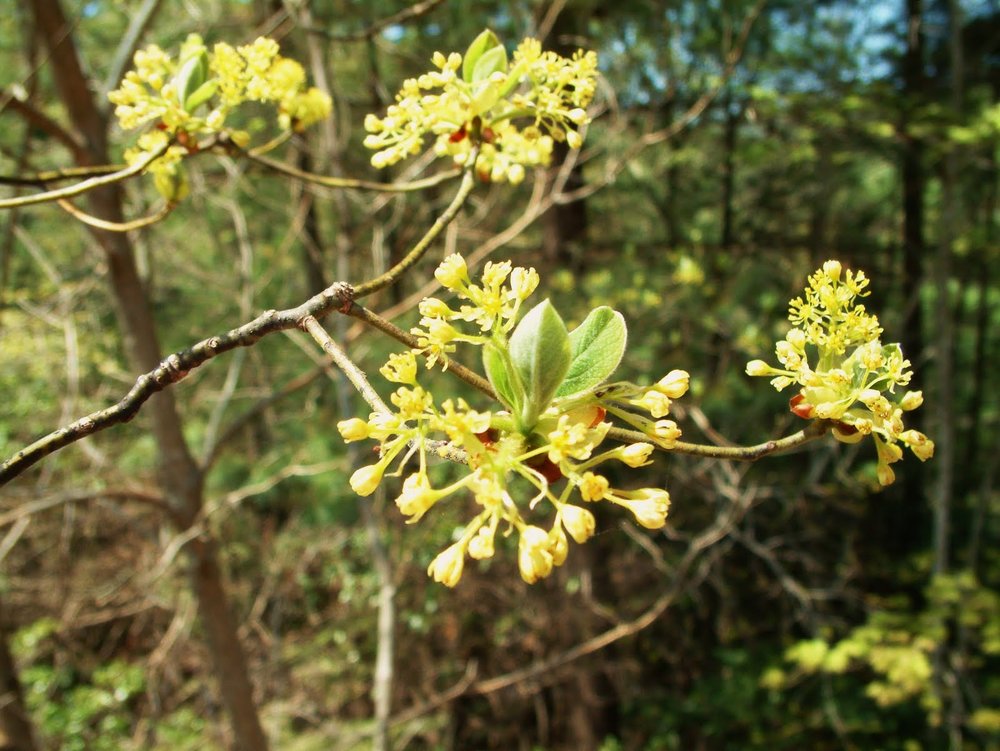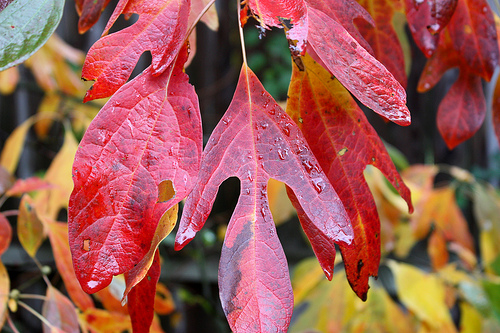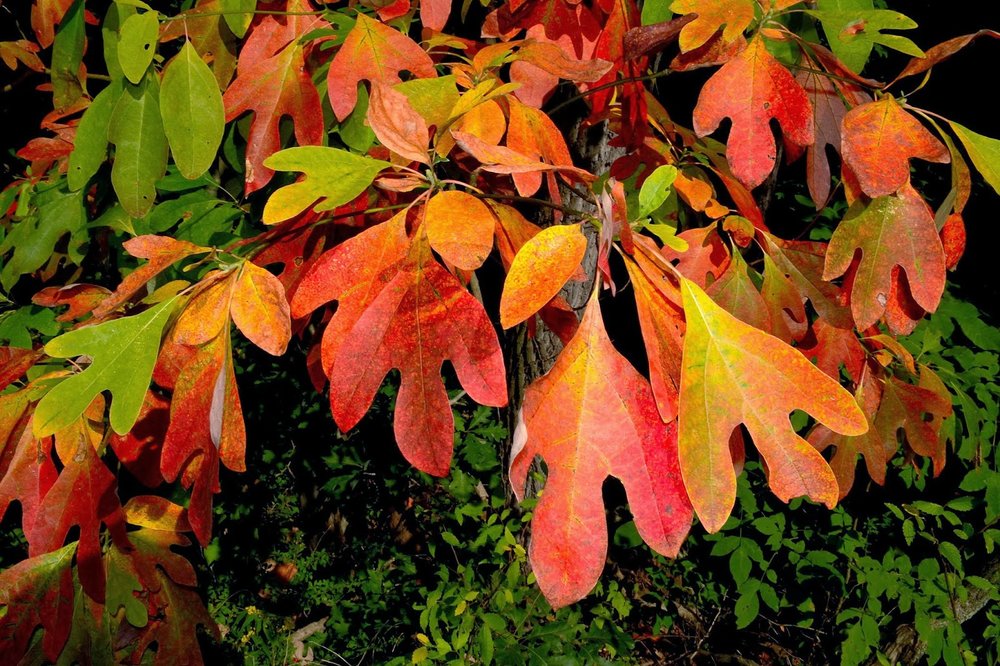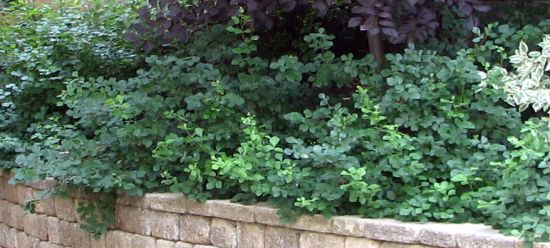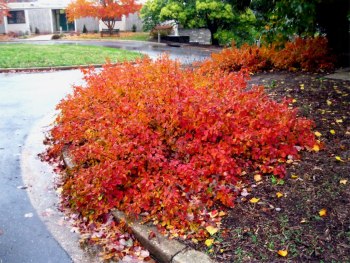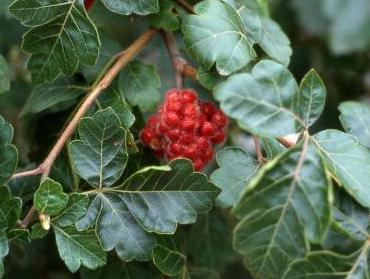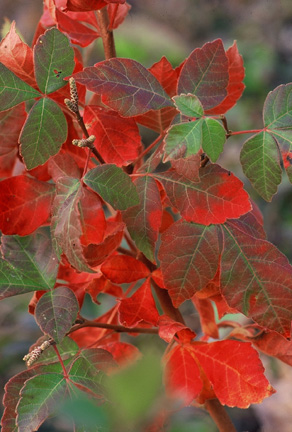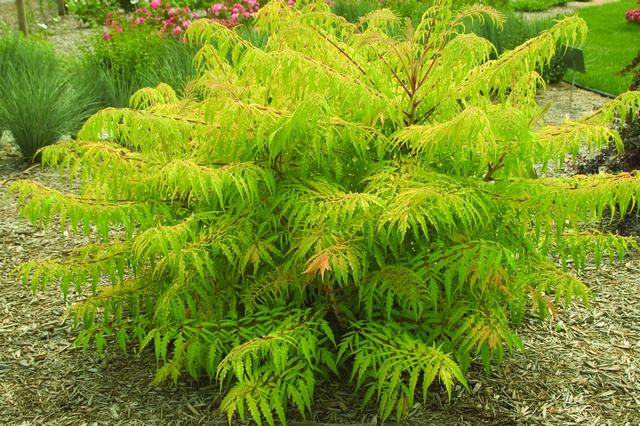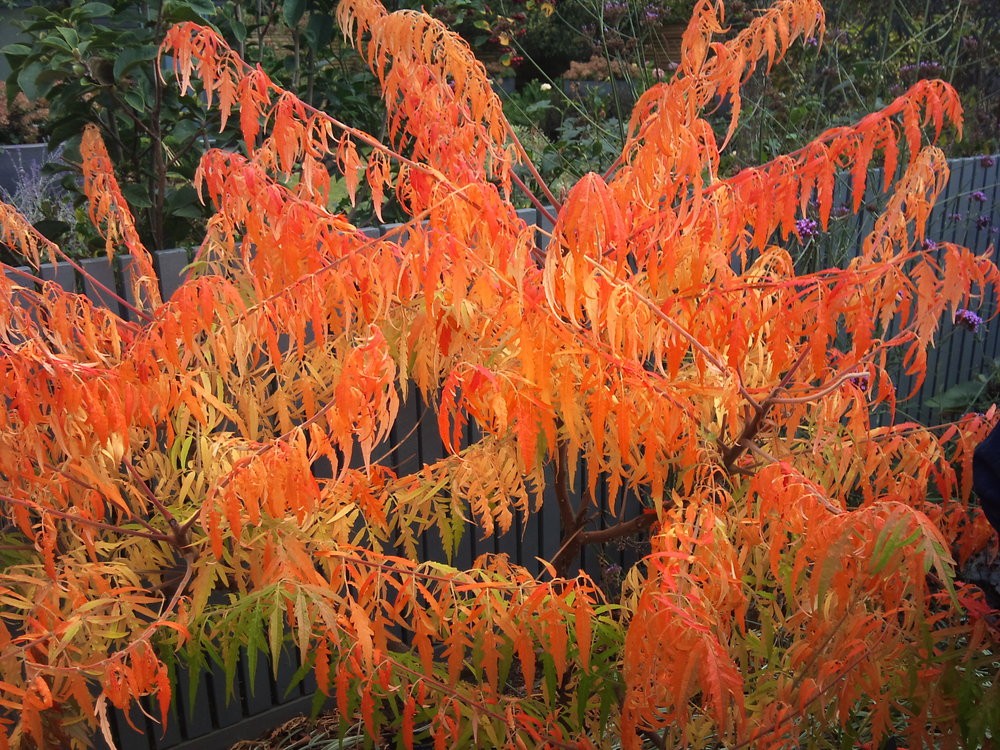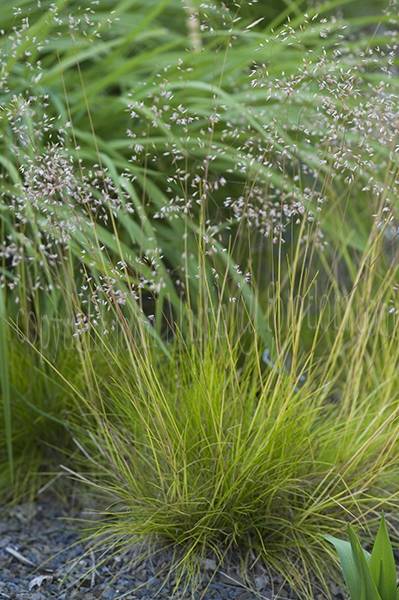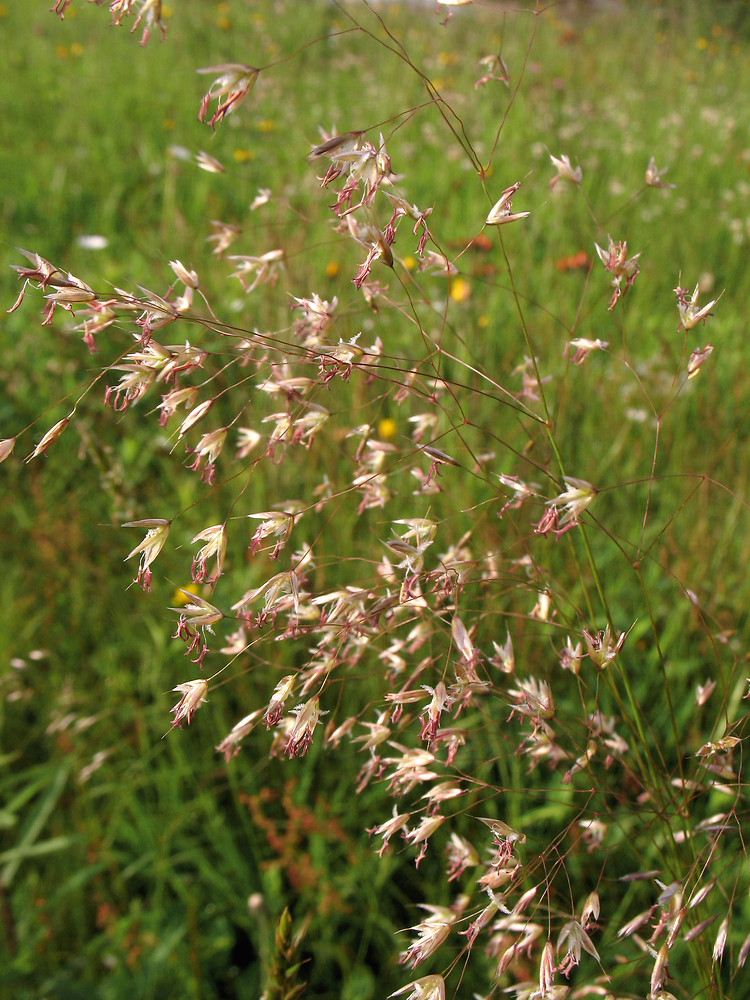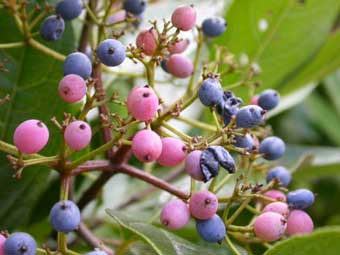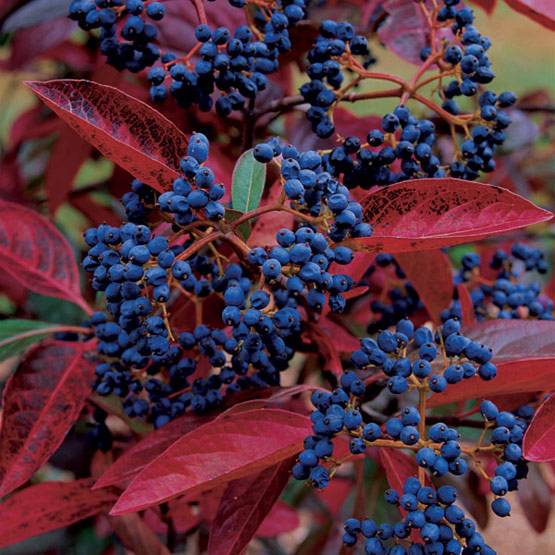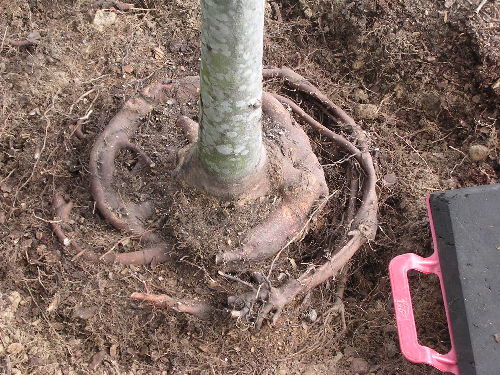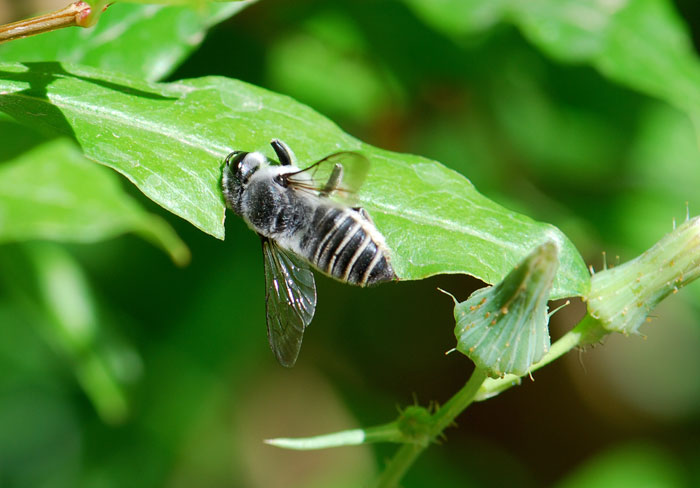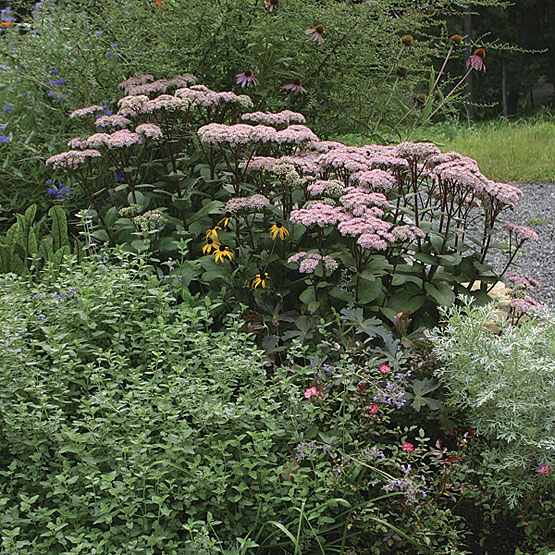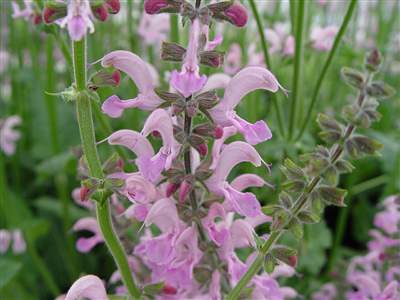E. tennesseensis
Most Echinacea species have taproots, making them difficult to transplant or grow in containers, and they resent poorly-drained soil. The exception is E. purpurea (Purple Coneflower), which grows in damp or even wet prairies and as a consequence has evolved a more forgiving fibrous root system that functions better in this type of soil. It has a further advantage in that its ray florets are wide and flat, not long and droopy, making it more showy.
E. paradoxa has yellow ray florets, and breeders realized that if they crossed this plant with E. purpurea, all manner of white, orange, red, purple and pink progeny result. The disc florets of the various Echinacea species can vary from dark burgundy, black, white, yellow or orange. Mixing and matching ray floret color and disc floret color has created some beautiful combinations. The characteristics that have been selected for by Echinacea hybridizers include:
- Bloom the first year from seed;
- Overcome the self-incompatibility barrier so that they reproduce from seed;
- Sweetly fragrant flower heads;
- Compact, sturdy stems;
- Ray florets in white, pink, magenta, orange, red;
- Ray florets with different orientation - i.e. drooping, horizontal, erect;
- Doubled forms, including increases in the numbers of ray florets and petalody of the disc florets;
- Enhanced disease and pest resistance;
- Greater tolerance of wet soils and shade;
- Fibrous root system for greater transplantability.
Petalody = The metamorphosis of various floral organs, usually stamens, into petals.
Some of the “new” coneflowers are naturally-occurring cultivars – for example ‘Razzmatazz’, the first double cultivar, was discovered as a seedling in a Dutch cut flower field. Others are inter-specific hybrids, many between E. purpurea and E. paradoxa, some with a soupçon of E. tennesseensis thrown in. Then they can also be back-crossed with other seedlings to make different colors, doubles or dwarfs.
The most complicated part of Echinacea breeding is the self-incompatibility issue – a given Echinacea species is self-sterile; it doesn’t produce seed unless it is cross-pollinated. But wherever different species grow together, they hybridize. Echinacea allowed to self-seed in a garden is almost guaranteed to be hybrid if there are other echinaceas around. Thus, there’s a lot of naturally-occuring variation in coneflowers to begin with, which is good for selecting interesting cultivars, but once you select a hybrid that you want to propagate, it has to be done either vegetatively or in tissue culture. From a practical point of view, it also means that you should eliminate self-sown seedlings from your garden, because they won’t be “true” to the new and exciting hybrid that you want to grow.
Echinacea hybrids are quite sensitive to soil drainage conditions. Plugs can die fairly quickly if they’re wet for too long and sometimes those growing in pots can also die if they’re set out on landscape fabric without well-drained soil underneath. If spring rains come while the ground is still frozen lower down, the young plants often can’t survive the excess moisture and won’t come back. So when you’re looking for the right place to plant echinaceas in your garden, stick to the well-drained areas or create a slightly raised berm with a sand-rich soil mix.
Here are some of the newer cultivars:
